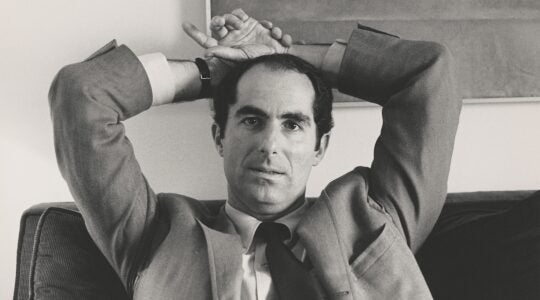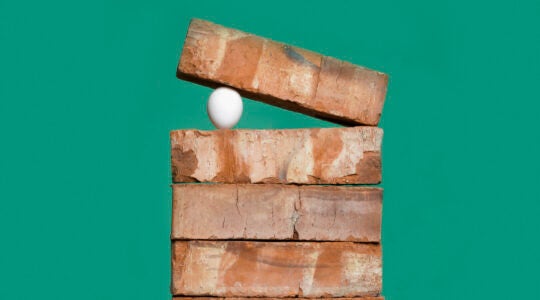In synagogue one recent Shabbat morning, a possible error was discovered in the Torah scroll. The reader stopped mid-chant and peered intently, like a gemologist checking the grade of a precious stone, before motioning for the rabbi to look, too. Rabbi and cantor then consulted different printed texts to identify the source of the mistake, and the congregation waited with unusual attention.
I read Torah often, and know all too well that mistakes are typically in the reader and not in the scroll. Reader and scroll are partners, healthy co-dependents in delivering words of Torah with fidelity. There is a quiet intimacy between reader and scroll that plays out in public view but usually goes unnoticed until moments like the one on Shabbat, when a reader goes (somewhat literally) off script.
It is difficult to find words for this partnership or to describe what reading Torah is like. Tradition gives us the Yiddish leyn and Hebrew koreh, and “read” is their English equivalent. I wonder, however, if any word really captures this activity: its deep connection to text, tradition, and community; the aspects of private study, personal offering and public performance it combines.
Leyn is a term rich with Old Word nuance, but I was slow to adopt it in conversation. I come from a New World home; the Yiddish felt like affectation, until its precision won me over. Leyn’s association with Torah is so close that it does not even need a direct object. You might leyn “War and Peace” or People magazine, but when you say you are leyning, it means only one thing.
According to some scholars, the word dates back to late antiquity and is connected to the Latin legere, meaning to read, and likely to read aloud. At some point, leyn also took on the particular meaning of chanting publicly from a Torah scroll, a word any Jewish community would need. Yiddish speakers added the German suffix -en to the older root sometime in the 16th century, as today we would add -ed or -ing in a sentence like this one that has come, surprisingly, from my own mouth: “Are you really leyning again after you leyned so many verses last week?”
This word also brings to mind the many different communities where Torah was leyned in Eastern Europe, and carries within it miles and centuries of Jewish history. The voice of a leyner holds traces of these as well. It is said that you can hear the teacher in the voice of a reader, and I believe this to be true. Finding the lineage of a reader in a particular cantillation or vocal intonation is, admittedly, a nerdy version of Inside Baseball, but it is also to hear Torah shared among generations unfolding in real time.
I have interviewed Torah readers over the last 15 years, interested to learn what draws them to the role and how they describe their experience. Some speak of providing a service to their community. Others like the precision reading Torah demands. They appreciate that there is a right way to read, and enjoy meeting that challenge. Still others find the experience deeply spiritual, particularly animating the silent letters in a scroll with voice and breath. This brings to mind a beautiful observation, attributed to Levinas, that “in each word, a bird with its wings folded awaits the breath of the reader.”
Once, seated in the office of a radiologist, I watched as the doctor examined an X-ray. I held my breath waiting to learn what she would find, much as the congregation waited for the rabbi’s decision that Shabbat. I remember feeling awe at her skill, gratitude for how well she deciphered — read, really — those white lines on a black background. There is a similar quality to reading Torah: deciphering black lines on a white background, trying to make the text’s form and structure clear.
What the leyner read on Shabbat was a fracture, a break in the folded wing of a word. A matter of micromillimeters in a single letter altered the meaning of a phrase and rendered the entire scroll passul, ritually unfit for reading. The episode concluded quickly. An error-free Torah replaced the passul scroll, the service continued and the room relaxed. I, however, wanted to dwell in the error a little longer, to understand what we discovered that morning in addition to a mistake.
First, there was the effort of volunteers who had another Torah at the ready, and whose care and maintenance of scrolls takes place behind the scenes. There was the room’s focused attention on the scroll’s authority, usually dormant but suddenly alive. And there was the reader, an extension of that authority, restoring ancient words to make them new over and over again.
Lizzie Leiman Kraiem lives and reads Torah in New York City.
The New York Jewish Week brings you the stories behind the headlines, keeping you connected to Jewish life in New York. Help sustain the reporting you trust by donating today.




